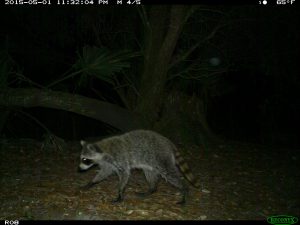by Raoul Boughton, Assistant Professor, Rangeland Wildlife and Ecosystems
UF/IFAS Range Cattle Research and Education Center
A computer model developed at the University of Wyoming by researchers, in collaboration with USDA’s National Wildlife Research Center, Arizona State University, California’s Tejon Ranch Conservancy, the University of Georgia, the University of Florida, Colorado Parks and Wildlife, the University of Saskatchewan, and the University of Montan, has demonstrated remarkable accuracy and efficiency in identifying images of wild animals from camera-trap photographs in North America.

“The ability to rapidly identify millions of images from camera traps can fundamentally change the way ecologists design and implement wildlife studies,” says the papers lead authors Michael Tabak and Ryan Miller, both of the U.S. Department of Agriculture’s Center for Epidemiology and Animal Health in Fort Collins, Colo.
The study builds on UW research published earlier this year in the Proceedings of the National Academy of Sciences (PNAS) in which a computer model analyzed 3.2 million images captured by camera traps in Africa by a citizen science project called Snapshot Serengeti. The artificial-intelligence technique called deep learning categorized animal images at a 96.6 percent accuracy rate, the same as teams of human volunteers achieved, but at a much more rapid pace.
In the latest study, the researchers trained a deep neural network on Mount Moran, UW’s high-performance computer cluster, to classify wildlife species using 3.37 million camera-trap images of 27 species of animals obtained from five states across the United States. The model then was tested on nearly 375,000 animal images at a rate of about 2,000 images per minute on a laptop computer, achieving 97.6 percent accuracy — likely the highest accuracy to date in using machine learning for wildlife image classification.

In our December Ona Highlight https://www.youtube.com/watch?v=u2kEoOoNeJU, I explain how one set of millions of images taken on Buck Island Ranch was included in the computer model development to specifically allow increased understanding of feral swine populations, and rapid identification of pictures containing swine.
The artificial-intelligence breakthrough, is now detailed in a paper published in the scientific journal Methods in Ecology and Evolution, and is described as a significant advancement in the study and conservation of wildlife. The computer model is now available in a software package for Program R, a widely used programming language and free software environment for statistical computing.
Visit our website to learn more about us: http://rcrec-ona.ifas.ufl.edu/
Comment or join our mail list: ona@ifas.ufl.edu
 0
0
